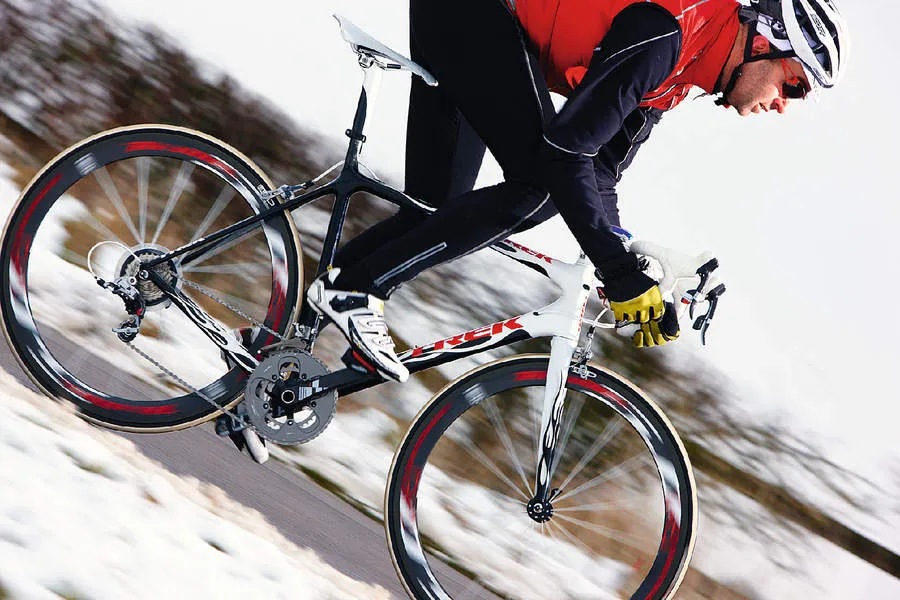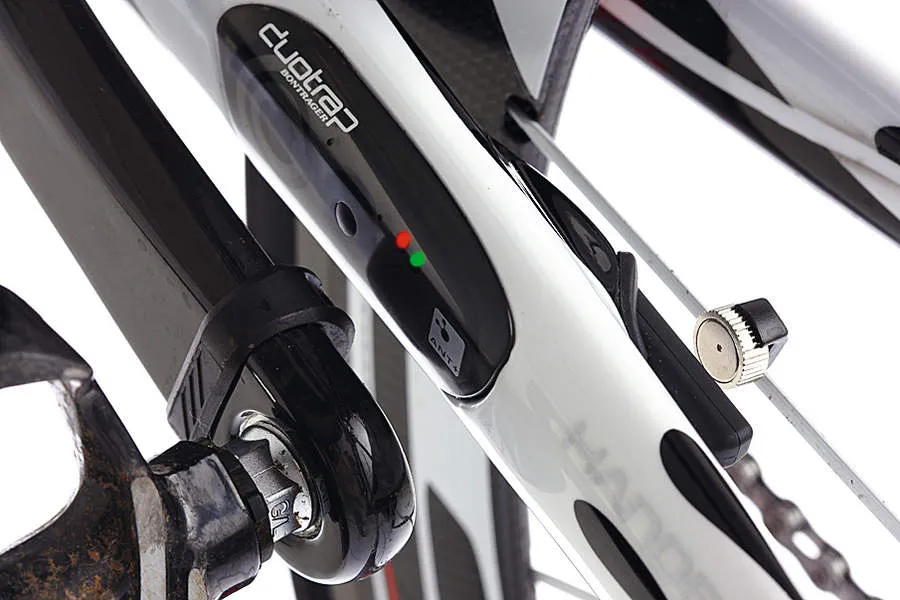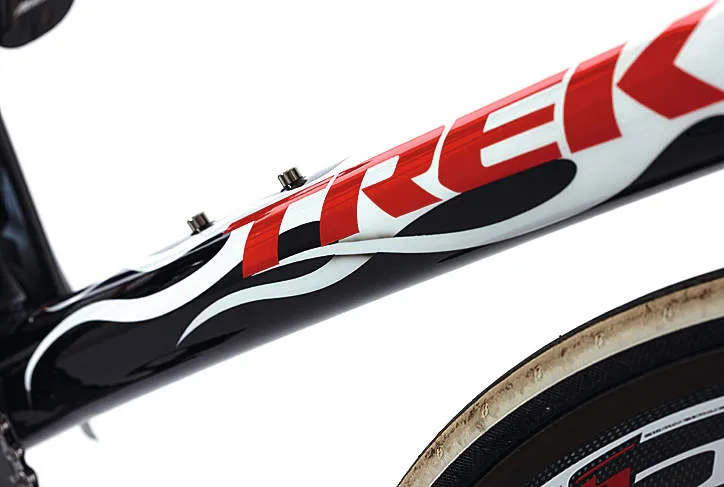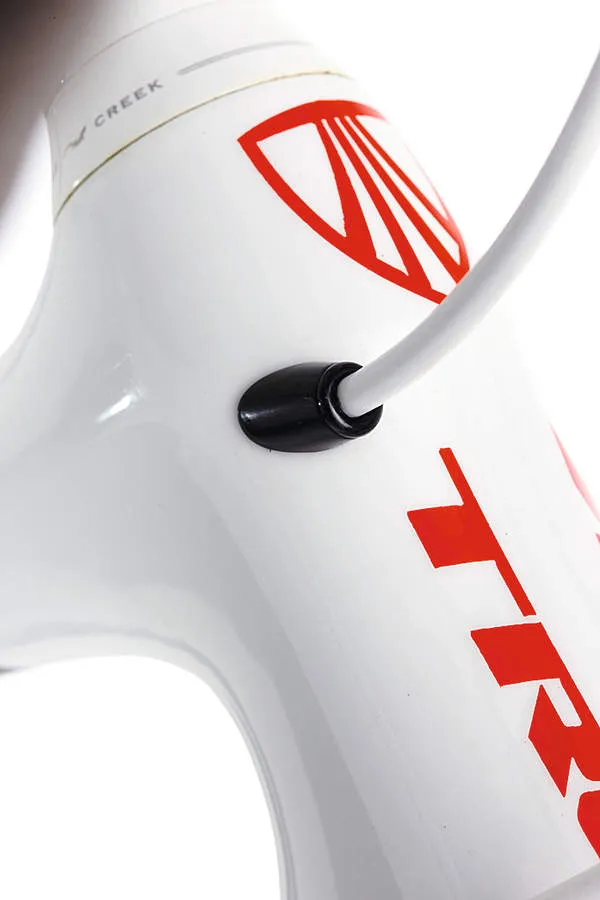Given the chance to create his own bespoke bike, Neil Pedoe used Trek's do-it-yourself Project One system to spec and colour co-ordinate a super-high-end road machine, and he loved the end result.
- Frame: Highly technical, super-light, super-stiff but above all incredibly comfortable (9/10)
- Handling: Assured cornering for such a light frame; ultra-efficient at climbing and sprinting (9/10)
- Equipment: The spec options are wide and various for all budgets – we went for extravagant (9/10)
- Wheels: The stiff and aerodynamic Bontrager Aeolus 5.0s are the perfect addition to such a quick, comfortable frame (9/10)
Some of you are going to ask why, if you’ve got this kind of money to spend on a custom bike, you would ignore all those elitist boutique brands with their cachet of exclusivity. Anyone can buy a Trek, can’t they?
The best reason is simply that Trek have spent all the time and money needed to try to make the best multi-day stage racing bike in the world.
Given that less than a year ago Alberto Contador won the Tour de France on the same frame, closely followed by Lance Armstrong in third on another one, it would be hard to argue that they haven’t succeeded.
Suit you, sir
“Fifty eight,” says Jeremy Barker as I walk over to shake the hand of the man in charge of bike fitting at Bath’s John’s Bikes. Thinking he’s guessing my age I’m a little gutted, then quickly realise he’s having an ‘educated guess’ at what size my custom Project One 6 Series Trek should be. An hour’s measuring and chatting later and he’s confirmed what he already knew.
Jeremy is included in the price of a Project One Trek – or at least the benefit of his or your chosen Trek dealer’s bike fitting experience is – because this isn’t a bike you can just walk into a shop and buy, and you can’t buy it online either.
But what you can do online is tweak, fiddle and fantasise to your heart’s content on Trek’s Project One website, with thousands of different custom paint finish, colour scheme and bike specification combinations to create your dream bike.
On the paint scheme front alone there are five Select Series schemes that come at no extra charge, and then 11 different Signature series colour schemes, each of which can be customised too. As can the detail colours of your wheels, cables, bar tape and even seat detailing.
The paint selection was fairly simple for me – I chose the one that looked like it had been made to match the new Cycling Plus team kit, with fantastic looking colour coded semi-deep Bontrager Aeolus 5 carbon clinchers to match. Nice. The price of this Custom Flames paint job is about £320 extra – but look: they’ve even sprayed the fork with flames.
Once you’re done, you can save your creation and tweak it another day, print it out or get the site to send it to your local Trek dealer to get your order under way.
You don’t have to start with a blank sheet though, and there are default specification levels provided all the way through for those not so keen on spending evenings on an online shopping experience.
Adding the compulsory dealer is a clever feature of the customisation route – Trek let you mess around online as much as you like but add the control of a trusted local bike shop’s Jeremy Barker to make sure you don’t mess up your own dream bike.
The only thing that’s not custom about the Project One is the choice of three basic frame geometries. They are a women’s WSD model, the Pro and the Performance. The only difference between the two men’s models is that the Performance has a 30mm higher front stack.
Ma Madone à moi
Apparently, most people buy the Performance. You might notice I’ve got about 3cm of spacers under my stem anyway, so perhaps I wouldn’t have needed them if I hadn’t gone for the Pro. But I’ve got time trials planned this year, and fancy seeing just how low I can go.
The groupset I chose was SRAM Red – mainly because I wanted to see what all the fuss was about. To be honest, it takes some getting used to. If you tend to ride on the hoods a lot, you need to be very careful with your fingers. If they’re flapping around when you get out of the saddle it’s very easy to accidentally downshift. The upshift is more time-consuming than even Ultegra, which is a bit of a shame, because it's a good looking groupset.
The wheel choice is pure extravagance, and accounts for going on £1,500 of the build. But not only do Bontrager’s Aeolus 5.0 clinchers look awesome, they ride faultlessly too, with no flex even under the biggest climbing loads. There are 11 sets of rims to choose from, right up to a deeper Aeolus 9.0 clincher.
Normally I go for 175mm cranks, but as my knees are getting creakier, I went for slightly shorter 172.5, and of course a compact double. Like a certain rider from Texas, I subscribe to the high cadence school of pedalling. Unlike Mr Armstrong my power-to-weight ratio means I need some pretty small gears though. So a small 34-tooth inner chainring on the front and a generous 11-26 cassette on the back should see me round most of the hilly sportives I’ll be aiming for in 2010.
You can get two lengths of seat cap on the Madone: either 135mm or 175mm, the shorter of which was right on the limit line for me. So I just swapped it. It’s a great system, and means there’s no weakening slot needed in the top of the seat tube.
One of my favourite touches on the Madone is the Duotrap sensor in the rear left chainstay, which picks up the cadence from the crank on one side, and speed, mileage and so on from the back wheel. It transmits all this data via a wireless Ant+ signal, which means that all that money you spent on your fancy Garmin Edge or other high-end bike computer is not wasted. You’ll also never be able to cable tie widgets to your top-end bike with a clear conscience again.
On the road
The ride is simply awesome. The biggest surprise is how comfortable it is. I was reluctant to take Levi Leipheimer’s word for it when he says on Trek’s website that it’s the most comfortable bike he’s ever ridden – he is after all a hardened pro. I'm neither pro nor hardened but do happen to agree.
The impressive thing here is that despite this comfort, the Madone is stunningly efficient at going forward. Trek tell us this is thanks to the extra girth of the 90mm wide bottom bracket, the OCLV carbon tubing and all manner of other carbon building black magic. The bottom line is it rides beautifully.
Okay, so my Project One is incredibly expensive, but consider that you can spec up the same awesome Tour de France-winning frame with a 105 groupset and less fancy kit for £2,800, and you realise just how versatile this custom build can be.
This review is part of a series of bespoke bike tests that we'll be featuring on BikeRadar over the next month.





